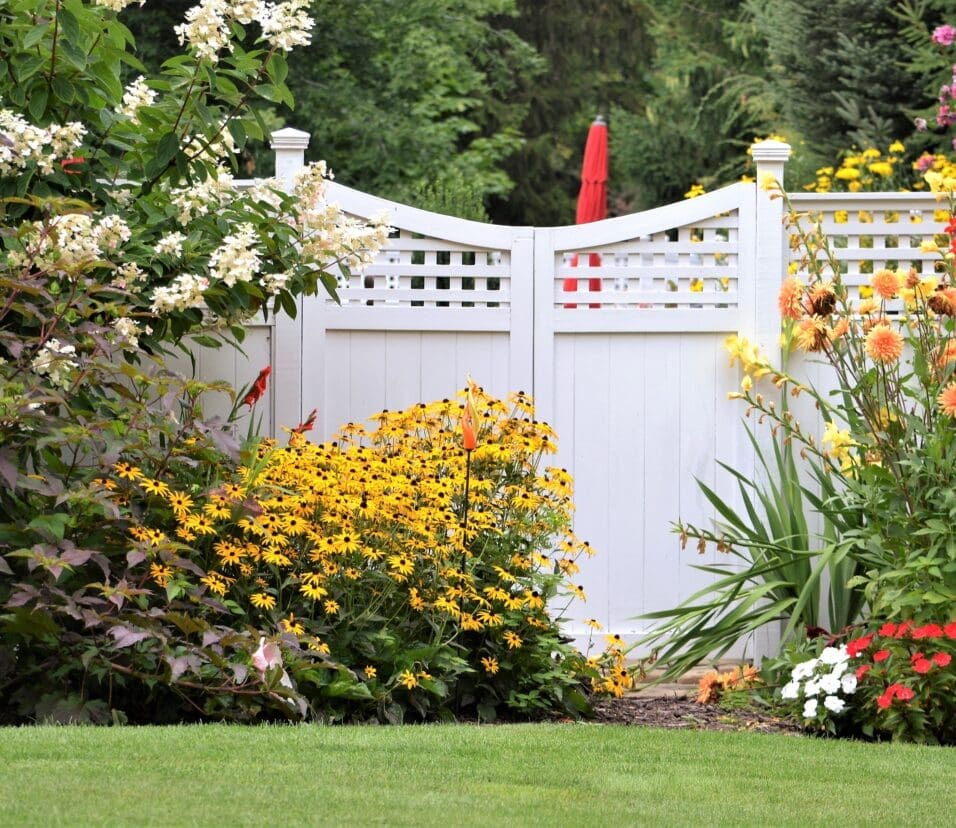Garden Design and Landscaping (Part 1)
Principles of Garden Design, including Layout, Colour Schemes, and Focal Points
Gardens have an enchanting ability to be both serene retreats and vibrant expressions of creativity. The art of garden design, encompassing layout, colour schemes, and focal points, serves as the foundation for crafting these outdoor havens. With every element meticulously chosen, gardens become living canvases that reflect nature’s harmony and human imagination. In this article, we delve into the fundamental principles that transform open spaces into captivating landscapes, where every plant and stone tells a story of intention and design.
Join us now, as we look at some of the key principles of garden design; including layout, colour schemes, and focal points:
1. LAYOUT:
- Balance and Symmetry
Achieving balance and symmetry in the layout can create a sense of harmony. Symmetry is when elements are mirrored on either side of a central point, while balance involves distributing visual weight evenly throughout the space.
- Unity and Coherence
The garden should have a unified theme or style that ties everything together. This can be achieved through consistent use of materials, plants, and design elements. A cohesive design ensures that the garden feels like a complete, integrated space.
- Scale and Proportion
Consider the size of your garden and the elements within it. Use plants and structures that are proportionate to the space. Oversized or undersized elements can disrupt the visual balance.
- Flow and Circulation
Design pathways that guide people through the garden. A good flow encourages exploration and interaction with different areas of the garden. Avoid creating dead-end spaces that disrupt the natural circulation.
- Zoning and Functionality
Divide the garden into functional zones based on how you plan to use the space. This might include areas for dining, relaxation, play, or gardening. Each zone should have a clear purpose, and the layout should support those functions.
- Focal Points
Create focal points to draw the eye and add interest to the garden. This could be a stunning plant, a sculpture, a water feature, or a beautifully designed seating area. Focal points add depth and character to the space.
- Site Conditions
Consider the climate, soil, sunlight, and other environmental factors in your garden. Choose plants that thrive in your region, and design elements that complement the natural conditions.
- Adaptability and Maintenance
Design the garden with the future in mind. Plants grow and change, so plan for their growth. Consider maintenance requirements and choose a design that is manageable in the long term.
- Creativity and Personalisation
Don’t be afraid to inject your personality and creativity into the design. Your garden should reflect your tastes and preferences.
- Sustainability
Design with sustainability in mind. Choose native plants, incorporate water-efficient features, and use environmentally-friendly materials. A sustainable garden is not only responsible but can also require less maintenance over time.
Remember, garden design is a dynamic process that allows for experimentation and evolution. It’s essential to strike a balance between the principles while adapting them to suit your unique space and vision.
2. COLOUR SCHEMES:


Colour schemes are a fundamental aspect of garden design and landscaping, since they play a crucial role in creating visual harmony, mood, and overall aesthetics. When choosing colour schemes for your garden, consider the following principles:
- Complementary Colours
Complementary colours are opposite each other on the colour wheel (e.g., red and green, blue and orange, yellow and purple). Using complementary colours can create strong contrasts that catch the eye.
- Analogous Colours
Analogous colours are adjacent to each other on the colour wheel (e.g., blue, green, and purple). This scheme creates a harmonious and calming effect, ideal for creating a serene garden atmosphere.
- Monochromatic Colours
This scheme involves using various shades and tints of a single colour, such as different shades of blue or pink. It can create a sophisticated and unified look.
- Triadic Colours
Triadic colour schemes use three colours evenly spaced around the colour wheel. For example, you might use red, blue, and yellow. This creates a balanced and vibrant palette.
- Neutral Colours
Neutral colours, such as white, grey, and beige, can provide a backdrop for more vibrant elements in the garden. They can also be used to create a minimalist or sophisticated look.
- Seasonal Variation
Consider how the colours in your garden change all year round. Plan for a variety of colours that bloom at different times to keep the garden visually appealing on a yearly basis.
- Contrast and Balance
Ensure there’s a balance between bold, vibrant colours and more subdued ones. Use contrasting colours to create focal points and guide the viewer’s eye.
- Consider the Setting
Think about the surrounding environment, architecture, and the purpose of the garden. The colour scheme should complement and enhance the overall atmosphere.
Get ready for the upcoming Part 2, where we dive into the realm of focal points and provide valuable insights into selecting low-maintenance plants tailored for your garden’s needs.









Leave feedback about this